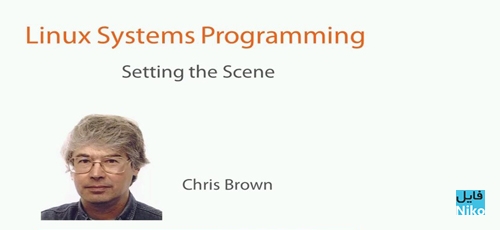در آموزش PluralSight Linux Systems Programming با برنامه نویسی سی (C) و پایتون (Python) و ملزومات آن ها در محیط لینوکس آشنا می شوید. و پس از آن یاد می گیرید از این دو زبان برای برنامه نویسی سیستمی در لینوکس بهره ببرید.
سر فصل های دوره آموزشی PluralSight Linux Systems Programming :
– Setting the Scene
– Kernel Space and User Space
– System Calls and Error Handling
– Systems Programming Example in C and Python
– Accessing Files
– Low-level IO
– Demo: File Copy 1
– Random Access
– Buffered and Formatted IO
– Demo: File Copy 2
– Pythonic File IO
– Scatter/Gather IO and mmap
– Summary
– Managing Files and Directories
– File System Structure
– The stat System Call and stat Structure
– Demo: Examining File Attributes
– Examining File Types and Permissions
– Managing Links and Symbolic Links
– Directory Traversal
– Doing It in Python
– The inotify API
– inotify Code Walk-through and Demo
– Summary
– The Command Line, the Environment, and Time
– Accessing Command Line Arguments
– Processing Command Options
– The Environment
– Time
– Time Zones and Locales
– Process Time
– Summary
– Processes and Pipes
– Process Concepts
– Creating Processes with Fork ()
– Executing a Program: The Exec() Family
– The Life Cycle of a Process
– Anonymous Pipes
– Demonstration: Pipes and Shell
– Named Pipes
– Summary
– Controlling Access, Identity, and Permissions
– Querying and Listing User Accounts
– Real vs. Effective Process Identity
– File Permissions
– File Ownership
– Summary
-Mastering Signals
-Signal Types, Origins, and Uses
-Process Termination and Exit Status
-Establishing a Signal Handler with Signal ()
-Better Signal Handling with Sigaction ()
-Suggestions 1 ;amp 2: Ignore or Terminate Gracefully
-Suggestion 3: Reconfigure on the Fly
-Suggestions 4 ;amp 5: Report Status Dynamically
-Suggestion 6: Implement a Timeout
-Suggestion 7: Schedule Periodic Actions
-Summary





 فایل نیکو
فایل نیکو















